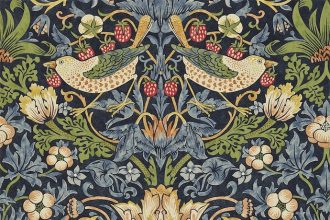Herman Miller Inc.
LCW (1946), Charles & Ray EamesIn the early 1940s Charles and Ray Eames experimented with wood-molding techniques that would have profound effects on the design world. They were commissioned by the US Navy to develop plywood splints, stretchers, and glider shells, molded under heat and pressure, that were used successfully in World War II. When the war was over, Eames applied the technology to making affordable, high-quality chairs that could be mass-produced.
Charles and Ray discovered that plywood did not withstand the stresses that occurred where the chair seat and back met, so they made two separate molded-plywood panels for the back and seat, joined by a plywood spine and supported by plywood legs. The seat was joined to the spine and legs with a series of four heavy rubber ‘shock mounts’. All of the connections were visible and the material was not hidden beneath upholstery. Even though the plywood chair was a compromise of the Eames’ vision to create a single shell chair, it constituted a true object of beauty. Herman Miller and Vitra (in Europe) are the only two companies producing chairs licensed by the Eames estate as represented by the Eames Office. The Lounge Chair is also featured on Wikiconic.
Care has been taken to trace the ownership of any copyright material and to contact the owner. The author does not intend to infringe on anyone’s copyright for text, photos or otherwise. Anyone who feels that any item in these pages may have inadvertently breeched their copyright should advise the author via the contact sheet, including a link to the page, so that appropriate remedial action can be taken.







